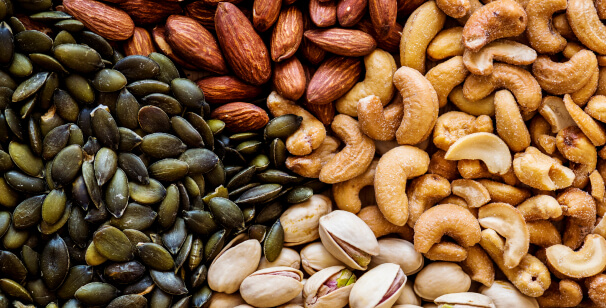What Does a Balanced Diet for Kids Look Like?
A balanced diet is designed to provide the essential nutrients in daily diet that kids need to grow, learn, and play. It typically includes:
Carbohydrates
Proteins
Essential for muscle and tissue development, sourced from lean meats, eggs, dairy, and plant-based options like beans or tofu. It is very crucial to meet a child’s protein needs in their growing period.
Fats
Vitamins and Minerals
Water
Hydration supports digestion and overall body function.
Why Balanced Meals Alone Are Not Enough
1. Nutrient Depletion in Modern Foods

- Soil Degradation Intensive farming practices have significantly depleted soils of essential minerals and nutrients, directly impacting the nutritional value of the crops grown in them. Plants rely on nutrient-rich soil for their vitamins and minerals, but overuse of the same farmland without proper rejuvenation has left soils exhausted and less fertile. Another contributing factor is the lack of crop rotation. In regions like India, for instance, farmers often alternate between wheat and rice crops year-round on the same land. This repetitive monocropping prevents the soil from replenishing its diverse nutrient profile and ultimately reducing the nutritional quality of the food produced.
- Selective Breeding for Yield Modern agriculture often prioritises size, growth speed, and resistance to pests over nutritional content. While this helps feed more people, it comes at the expense of essential vitamins and minerals.
- Global Climate Change Rising CO2 (carbon dioxide) levels have been linked to reduced concentrations of protein, zinc, and iron in staple crops such as wheat and rice.
2. Picky Eating Habits

Picky eating is a common challenge among children, affecting their nutritional intake and leading to potential deficiencies in essential nutrients like Omega-3 fatty acids, iron, and zinc. Studies show that picky eating behaviours are prevalent in approximately 14% to 50% of children, depending on how it’s defined. This behaviour often emerges around toddlerhood and can persist into adolescence.
- Genetics play a significant role, accounting for up to 84% of food fussiness in children aged 3 to 13.
- Environmental factors and parental strategies also influence a child’s willingness to explore diverse foods.
- Introduce diverse foods early in childhood to build familiarity.
- Create positive mealtime experiences, avoiding pressure to eat specific foods.
- Encourage participation in meal preparation to pique curiosity about new ingredients.
3. Increased Nutritional Demands During Growth

- Vitamin D: Essential for bone health and immunity.
- Iron: Prevents fatigue and supports cognitive function.
- Calcium: Critical for developing strong bones and teeth.
- Protein: For muscle growth and repair, particularly for active kids.
4. Modern Lifestyle Challenges

This shift in eating habits highlights the challenge for parents to ensure balanced nutrition. With a reliance on processed foods, even families with the best intentions may struggle to provide children with all the nutrients they need for healthy growth and development.
5. Dietary Restrictions or Allergies

Food allergies in kids have been rising over the past few decades, with recent statistics indicating that about 5-8% of children globally are affected by one or more food allergies. In such cases, parents face the challenge of finding nutrient-rich alternatives that are both safe and appealing to children. For instance, non-dairy milk substitutes like almond or oat milk must be fortified to match the nutrient profile of traditional dairy products. Without such adjustments, the risk of deficiencies increases significantly.
The Essential Nutrients Kids Often Miss
1. Omega-3 Fatty Acids for Brain Health

- Importance: Critical for brain development, focus, and memory.
- Sources: Fatty fish like salmon, walnuts, chia seeds, flaxseeds and algae oil.
- Why It’s Missed: Not commonly part of many children’s diets due to taste preferences.
2. Vitamin D for Bones and Immunity

- Importance: Helps the body absorb calcium and supports immune function.
- Sources: Sunlight, fortified milk, egg yolks, mushrooms, and fatty fish.
- Why It’s Missed: Limited sun exposure, especially during winter or in urban settings.
3. Iron for Energy and Focus

- Importance: Prevents anaemia, supports energy and brain function.
- Sources: Red meat, lentils, spinach, tofu, legumes and fortified cereals.
- Why It’s Missed: Often disliked by children or not consumed in sufficient amounts.
4. Zinc for Growth and Immunity

- Importance: Supports immune health, wound healing, and growth.
- Sources: Nuts, seeds, whole grains, and legumes.
- Why It’s Missed: Uncommon in processed or convenience foods.
5. Fibre for Digestive Health

- Importance: Aids digestion and prevents constipation.
- Sources: Whole grains, fruits, vegetables, and legumes.
- Why It’s Missed: Processed snacks and refined foods dominate many diets.
How to Spot Nutritional Deficiencies in Kids

As a parent, it’s crucial to recognise the common symptoms of nutritional deficiencies in your child. These signs may be subtle at first, but over time, they can affect your child’s health, growth, and development. Keep an eye out for the following symptoms:
- Fatigue or Low Energy: Frequent tiredness or complaints of low energy may indicate insufficient intake of iron, B vitamins, or other essential nutrients.
- Frequent Illnesses or Infections: Poor nutrition can weaken the immune system, making children more susceptible to colds, infections, or slower recovery times.
- Pale Skin, Brittle Nails, or Slow Hair Growth: These symptoms may signal deficiencies in iron, vitamin C, or protein, which are crucial for producing healthy red blood cells and maintaining strong hair and nails. Parents must be aware of how to address protein deficiency in their children.
- Poor Concentration and Academic Performance: A lack of key nutrients such as Omega-3s, zinc, and iron can result in difficulties with focus and learning in school.
- Delayed Physical Growth or Weak Bones: Insufficient intake of calcium, vitamin D, and protein can stunt growth and lead to weak or fragile bones, especially if these nutrients are not absorbed effectively.
Practical Tips to Fill Nutritional Gaps

- Create colourful meals using fruits and vegetables in rainbow colours.
- Add nutrient-rich ingredients to favourite dishes, like blending spinach into smoothies or adding grated carrots to pasta sauce.
2. Opt for Fortified Foods

3. Use Supplements Wisely

A high-quality nutritional supplement tailored for kids can effectively fill nutritional gaps, complementing their daily meals without replacing whole foods. Supplements like Bloom Nutrition Powder are specially designed for picky eaters to provide essential vitamins and minerals kids might miss, ensuring their growing bodies and minds get the support they need. With no added sugar or artificial flavours, this product offers a parent-approved way to support your child’s health while maintaining a balanced diet.
4. Educate Your Kids About Nutrition

Teach your kids the importance of nutrition in fun and interactive ways. Games, stories, or cooking activities can spark their interest in eating healthy. Here are some creative and engaging strategies:
- Make learning fun with challenges like creating colourful plates or playing nutrition-themed trivia.
- Use engaging tales to highlight the “superpowers” of healthy foods.
- Teach the value of nutrition by having kids help prepare meals and understand ingredients.
- Use kid-friendly apps or videos to make nutrition education interactive and enjoyable.
- Lead by example with family meals and fun food experiments together.
- Connect kids with their food by letting them pick fresh produce directly from farms or markets.
Conclusion: Helping Kids Thrive With Better Nutrition
FAQs
Iron, calcium, vitamin D, and omega-3 are among the most common deficiencies in children globally. These nutrients are vital for growth, energy, brain development, and boost immunity in kids.
While it’s possible with a carefully curated diet, modern factors like nutrient depletion, picky eating, and dietary restrictions often make it challenging. Fortified foods or supplements can play a critical role in ensuring children meet their nutritional needs.
Yes, when chosen appropriately and used as directed, nutritional supplements can be a safe and effective way to fill in any gaps in your child’s diet. However, it’s essential to consult a paediatrician before starting any supplement regimen, as they can recommend the right type and dosage based on your child’s age, diet, and health needs.
Vitamin D is crucial for bone health, immune function, and overall development. To ensure your child gets enough, encourage outdoor activities that allow for natural sunlight exposure, as sunlight triggers the body to produce vitamin D. Additionally, include vitamin D-rich foods in their diet, such as fortified milk, egg yolks, and fatty fish.
Fortified foods can be an excellent way to boost your child’s intake of essential vitamins and minerals, especially if they are picky eaters or have dietary restrictions. These foods are enhanced with nutrients like iron, calcium, and vitamin D, which may otherwise be difficult to obtain in adequate amounts. However, fortified foods should complement and not replace a well-balanced diet rich in whole, unprocessed foods.


